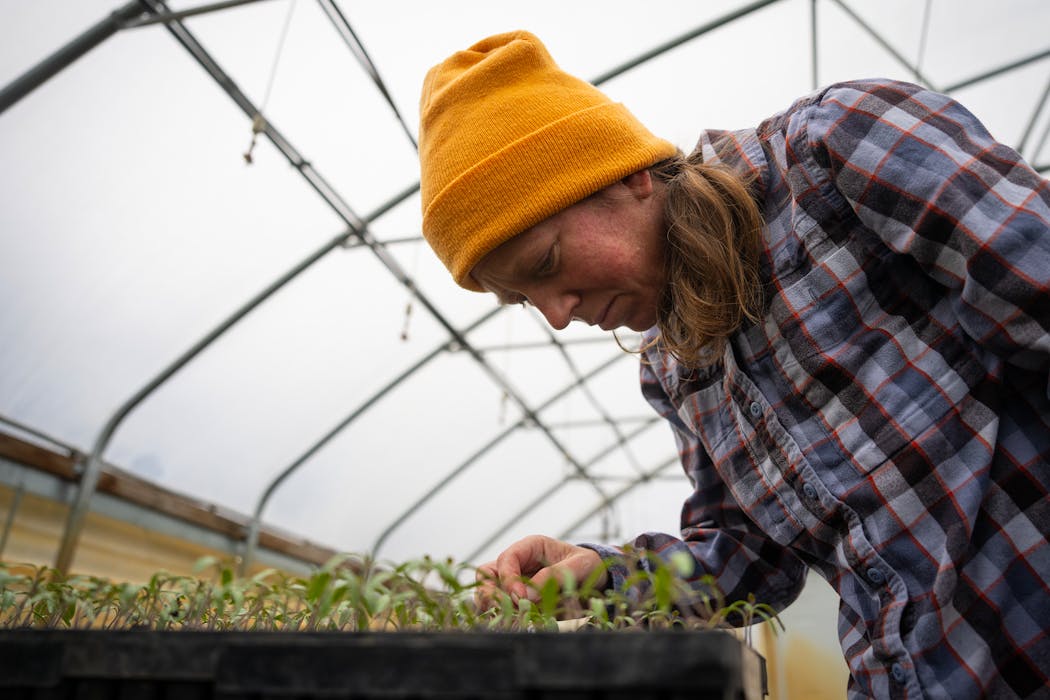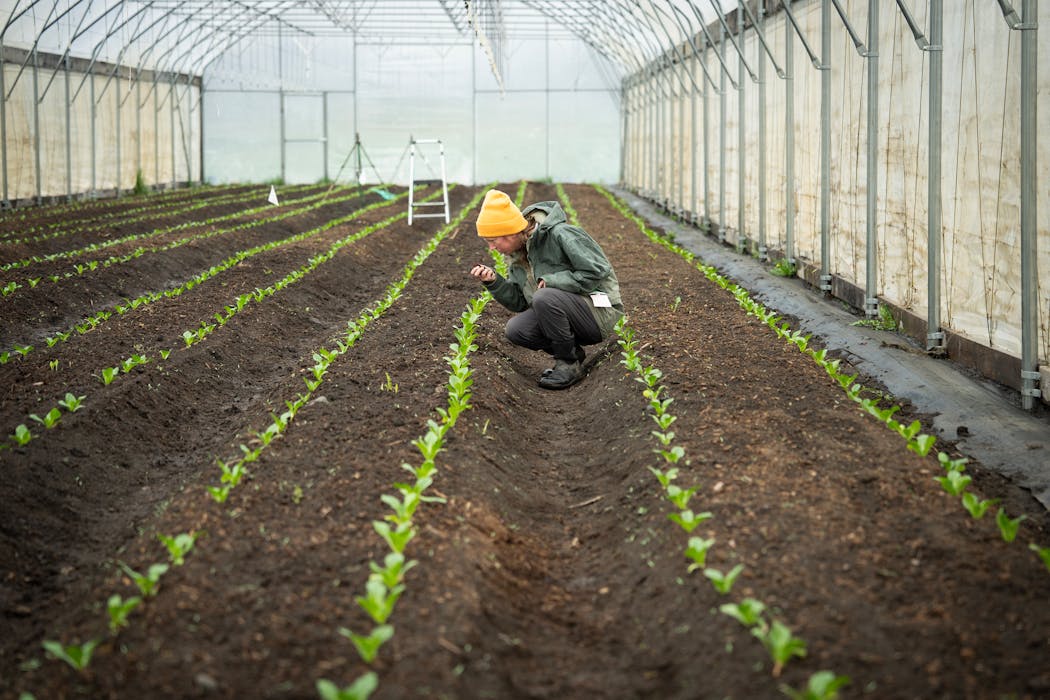The farmers at Seeds vegetable farm near Northfield sipped coffee Tuesday morning as they watched dark clouds sail over the fields.
Planting the onions could wait. Time for another cup of coffee.
"As an organic farmer, I'm excited about the rain for our environment and for our watershed," said Becca Rudebusch, who owns Seeds Farm, on Tuesday. "But rain means rest, too."
There hasn't been much rain-induced rest on farms across Minnesota over the last three seasons. And up until last Thursday's national drought report, 99% of the state had recorded abnormally dry conditions.
But a growing sliver of Minnesota — about 13% — slipped out of drought stage last week, according to the U.S. Drought Monitor at the University of Nebraska-Lincoln. For many, Tuesday's soaking of the region's fertile cropland from Worthington to Park Rapids, was a godsend.
"There's nothing like the chemistry of rainwater," Rudebusch said.
Still, a band of severe drought stretches east of Albert Lea over farm fields and bluffs south of I-90 all the way to Wisconsin. Other dry areas cluster around the Mississippi Headwaters, running north to the Canadian border.
Rudebusch said she's privileged to rely on irrigation from a deep well during dry years. And while wet, boot-sticking soil prevents field prep, she'll take the moisture.
Many farmers have already taken to the fields after the unofficial start to the corn-planting season on April 10. The state's row-crop farmers have planted 3% of corn and 2% of soybeans. Oats growers are ahead of average, with 17% of their cool-season crop planted. Up in the Red River Valley, rainfall has been sparse. Still, farmers recorded at least 2% of the sugar beet crop in the ground.
Carolyn Olson, who farms organic grain outside Cottonwood in southwestern Minnesota, seeded 350 acres of wheat last week. Last year was dry; her rain gauges collected half the water as a typical year.
"Yields were decent because we got rains right at the right time," Olson said. "But they weren't enough to replenish the soils."
Her good memory recalls last April and May when oscillating rain and snowfall throughout the spring kept farmers on the bench until well into prom season. This last winter also brought a dearth of snowfall.
Crop prices this spring are half of what they were a year ago. Smaller flocks of turkeys — after seasons of culling for avian flu protection — and smaller cattle herds have meant fewer uses for their grain, Olson said.
Agricultural exports also plunged 15% in 2023, according to the Minneapolis Federal Reserve.
"Having rain alleviates a little bit of the stress," Olson said. "But it's not completely taking it away."
This past weekend brought the start of the year to the Minneapolis Farmer's Market, signaling a market for the region's many vegetable farmers.
Yet, the ever-changing climate especially impacts smallholder farms that are often working with diverse crops, which require more exacting conditions and cultivation.
From her farm south of Northfield, Rudebusch and her small team send produce to local markets, cafeterias and the food shelf. While the rains soak the soil, there are miles yet to go this season.
"The other thing rain means is hail," Rudebusch said. "A lot of our infrastructure, such as the high-tunnels, are plastic."
By afternoon, Rudebusch planned to water greenhouse plants and tend to chores. That is, once the clouds dissipated and the coffee was finished.
New York City turns to AI-powered scanners in push to keep guns out of the subway system
North Carolina regulators says nonprofit run by lieutenant governor's wife owes the state $132K




